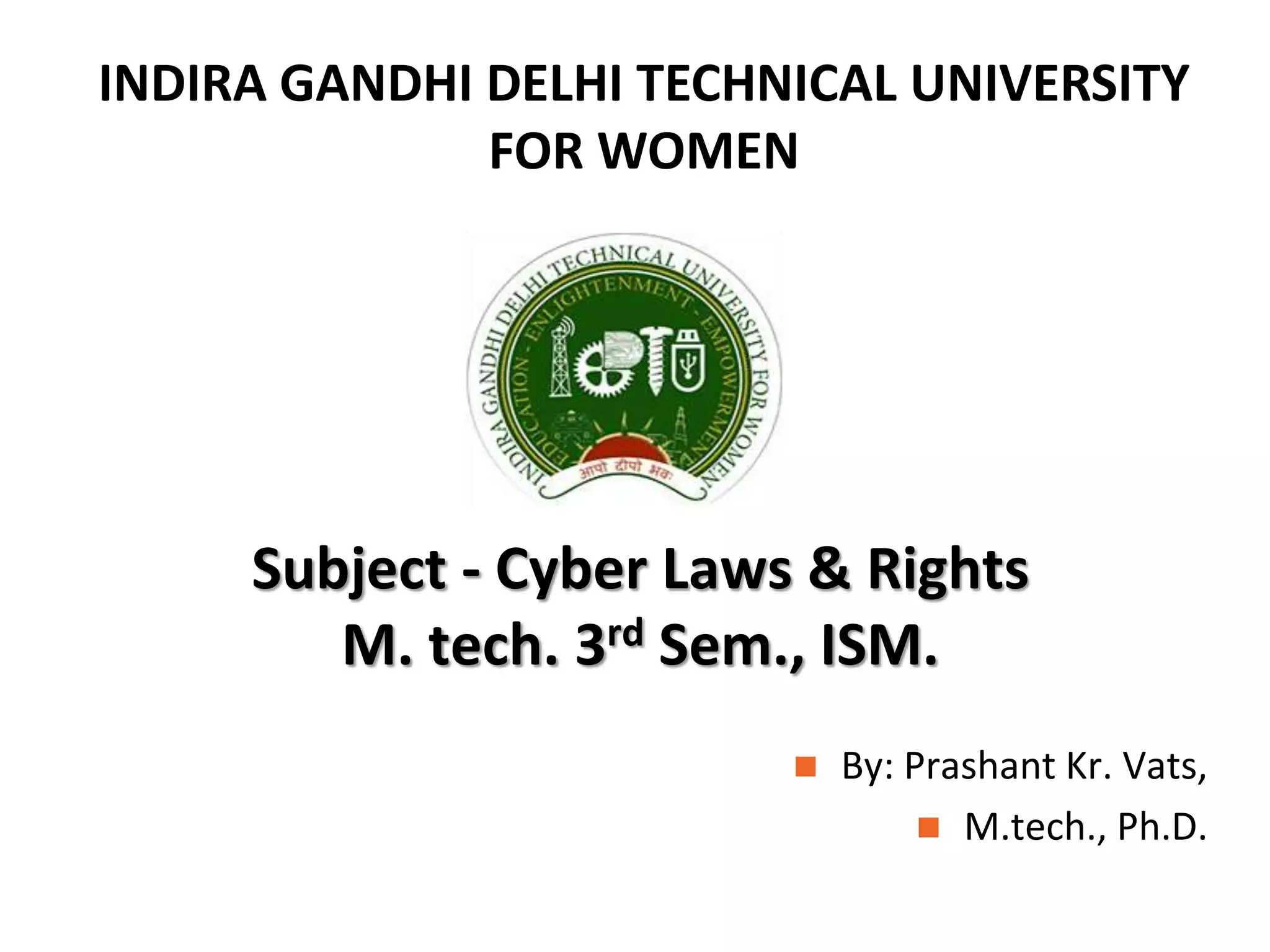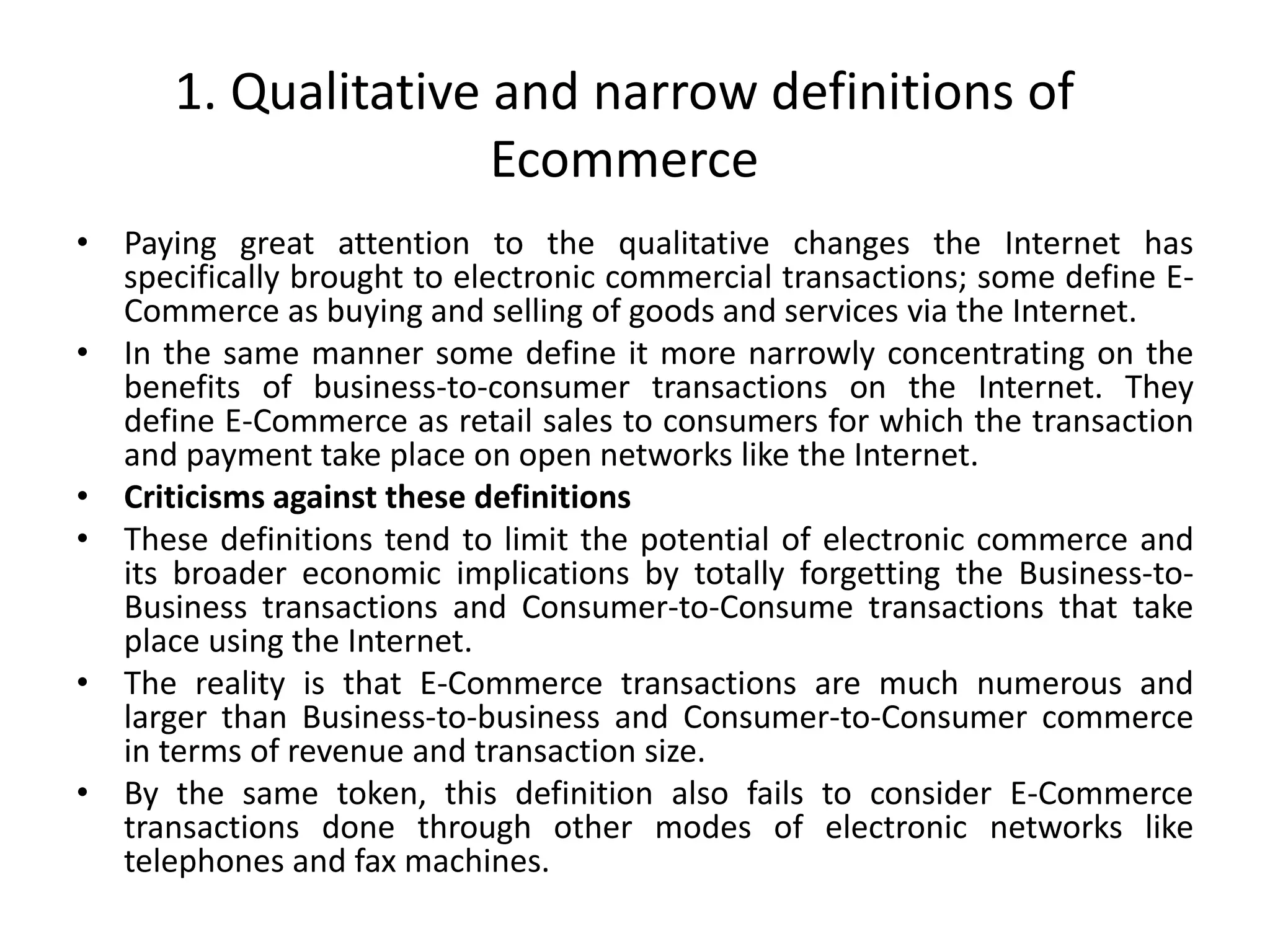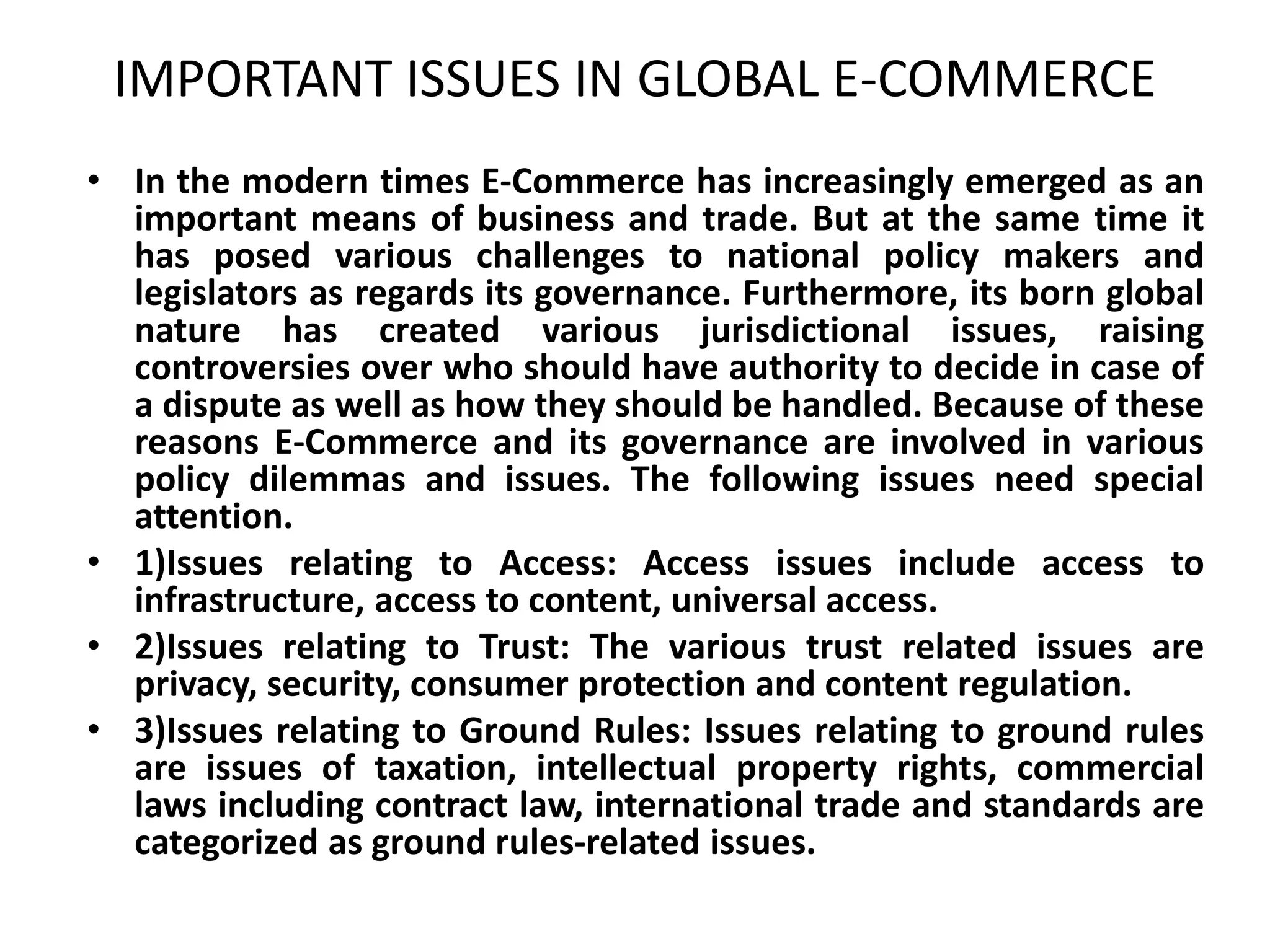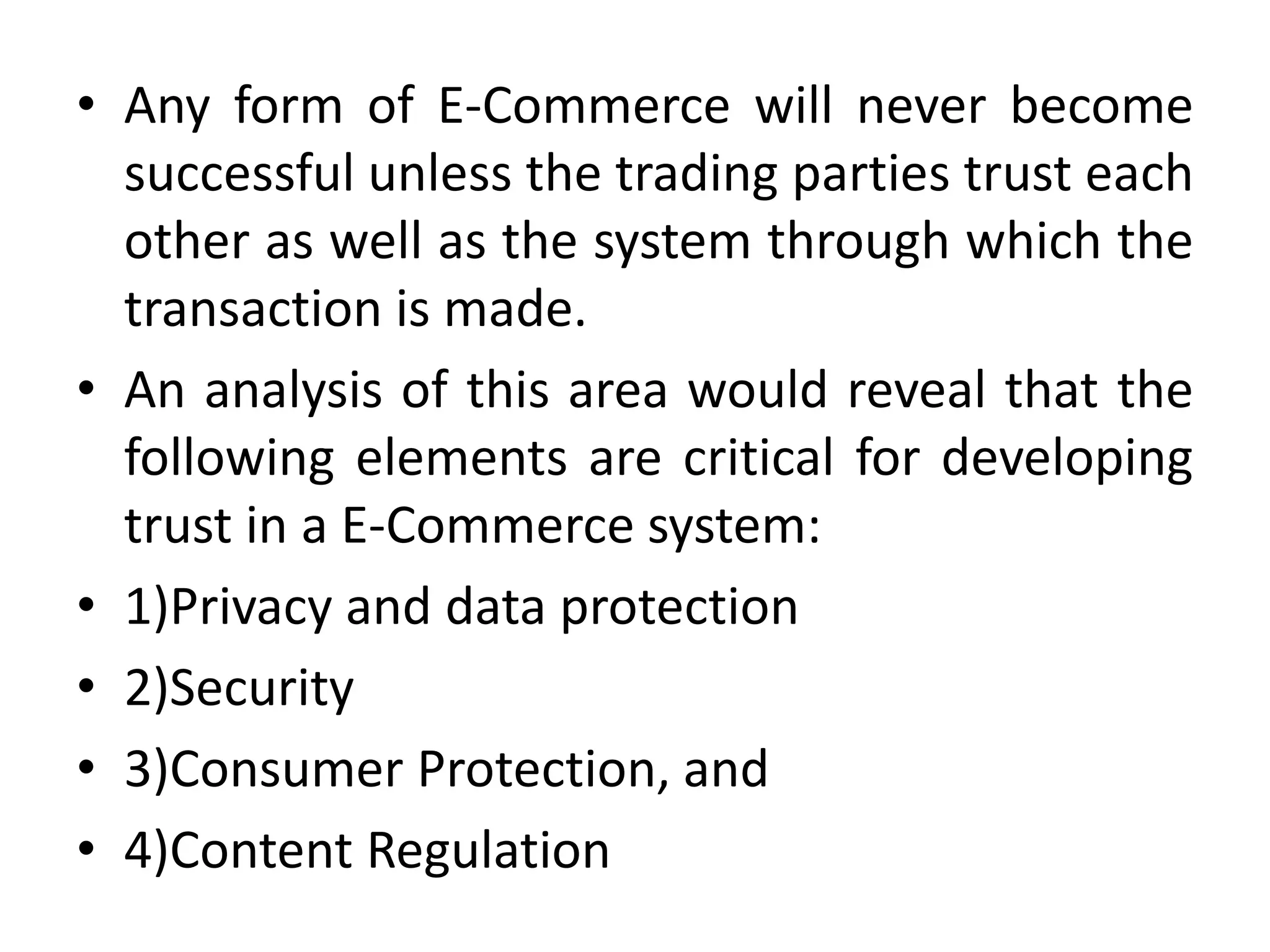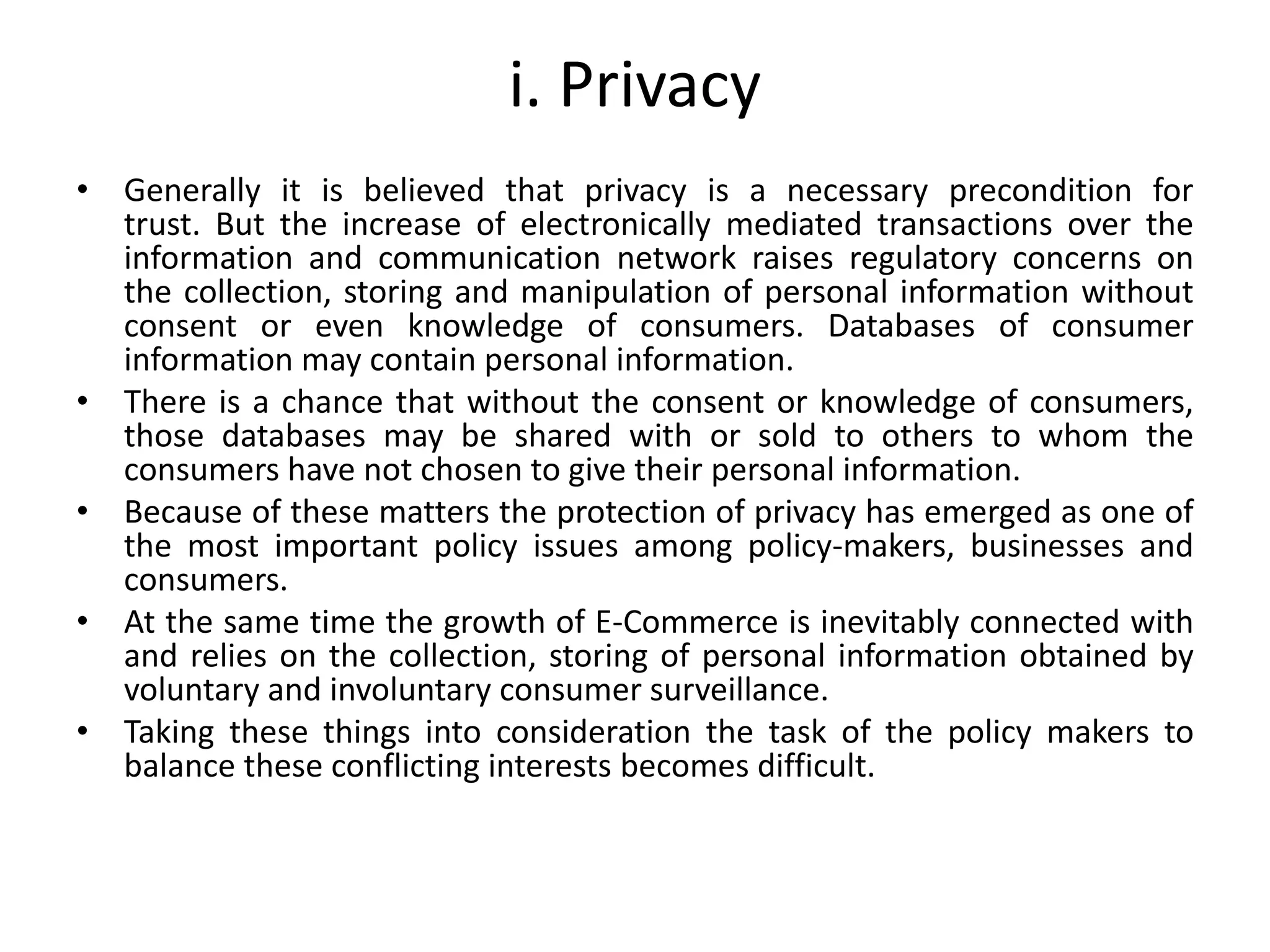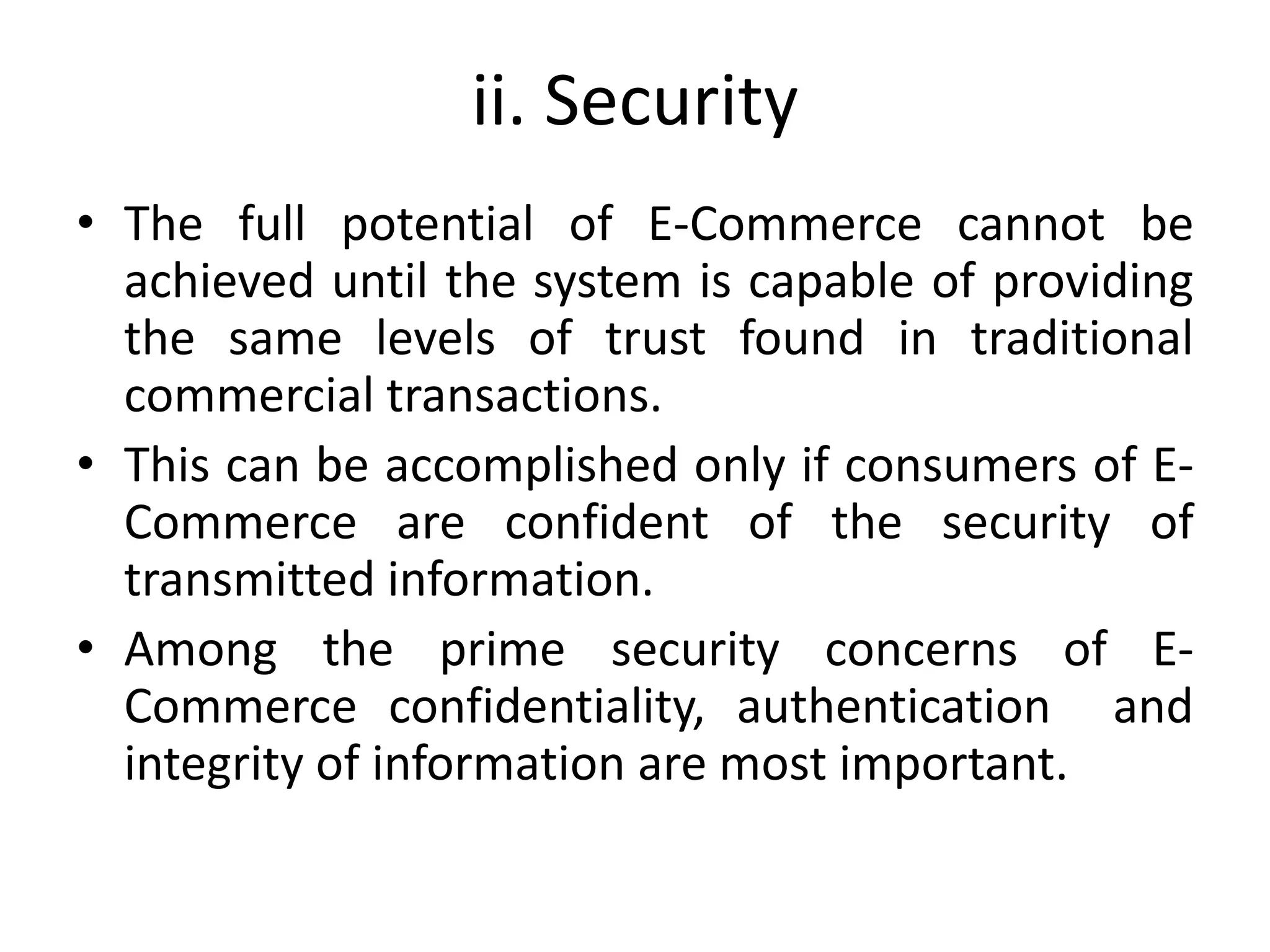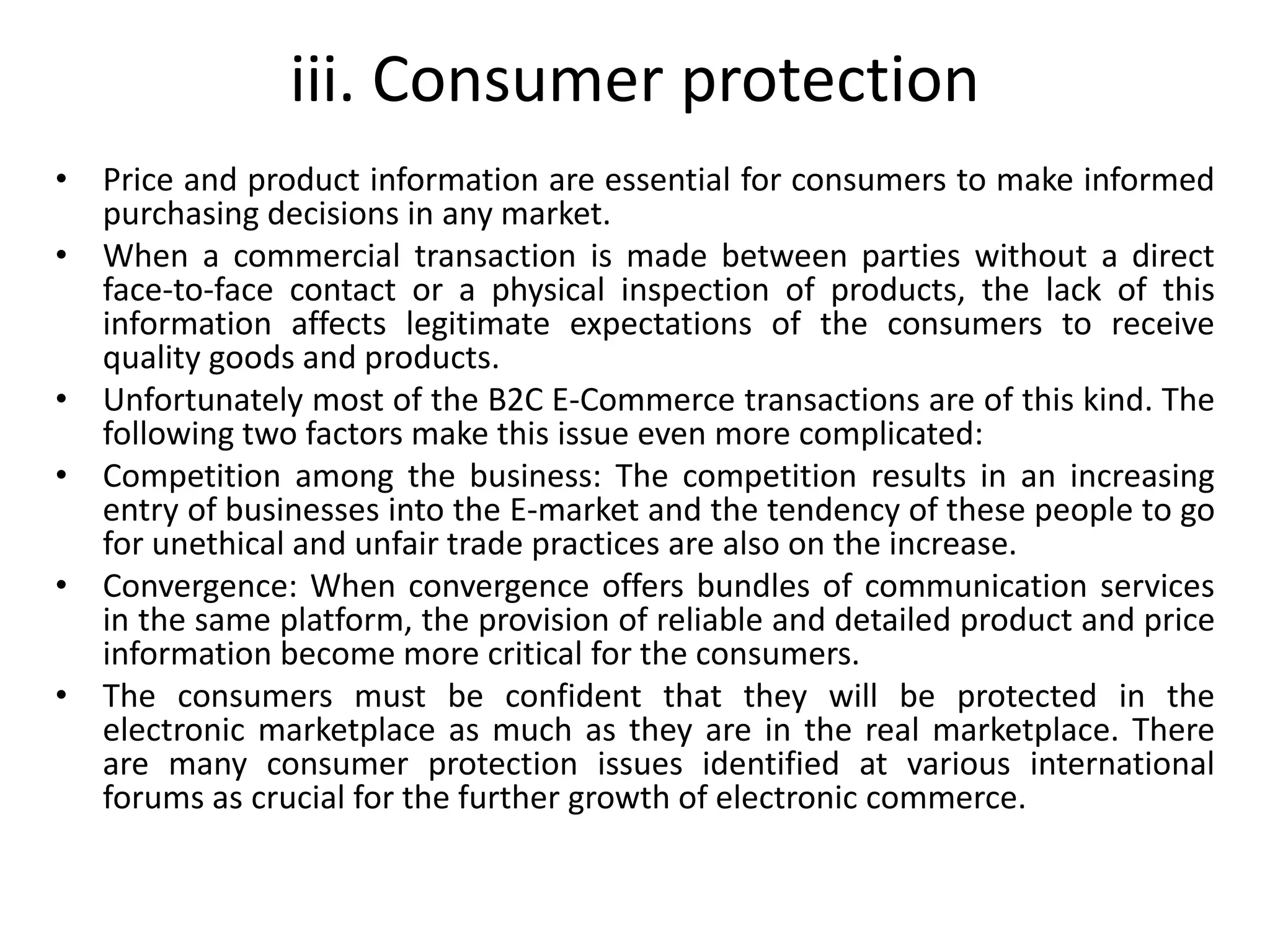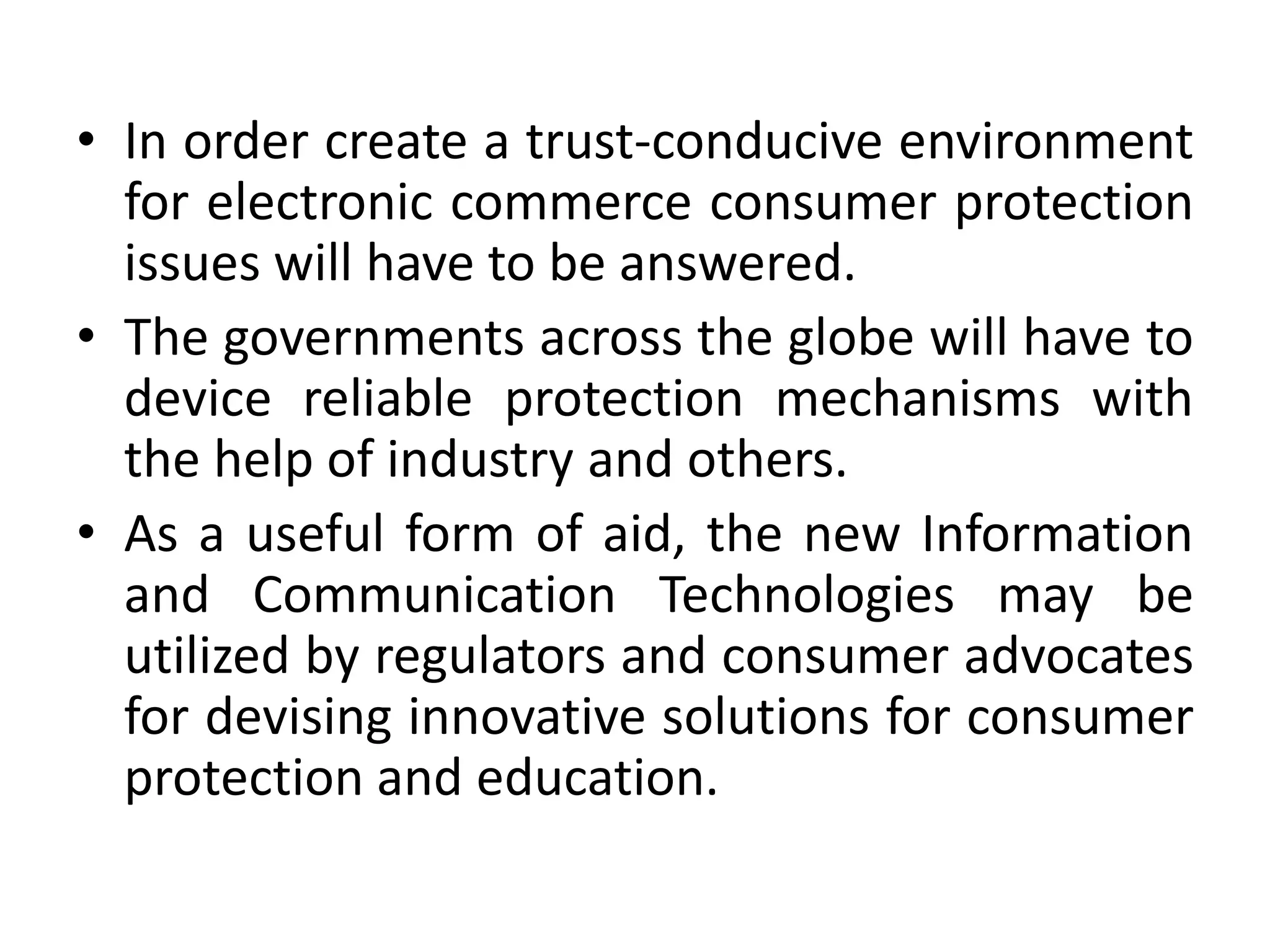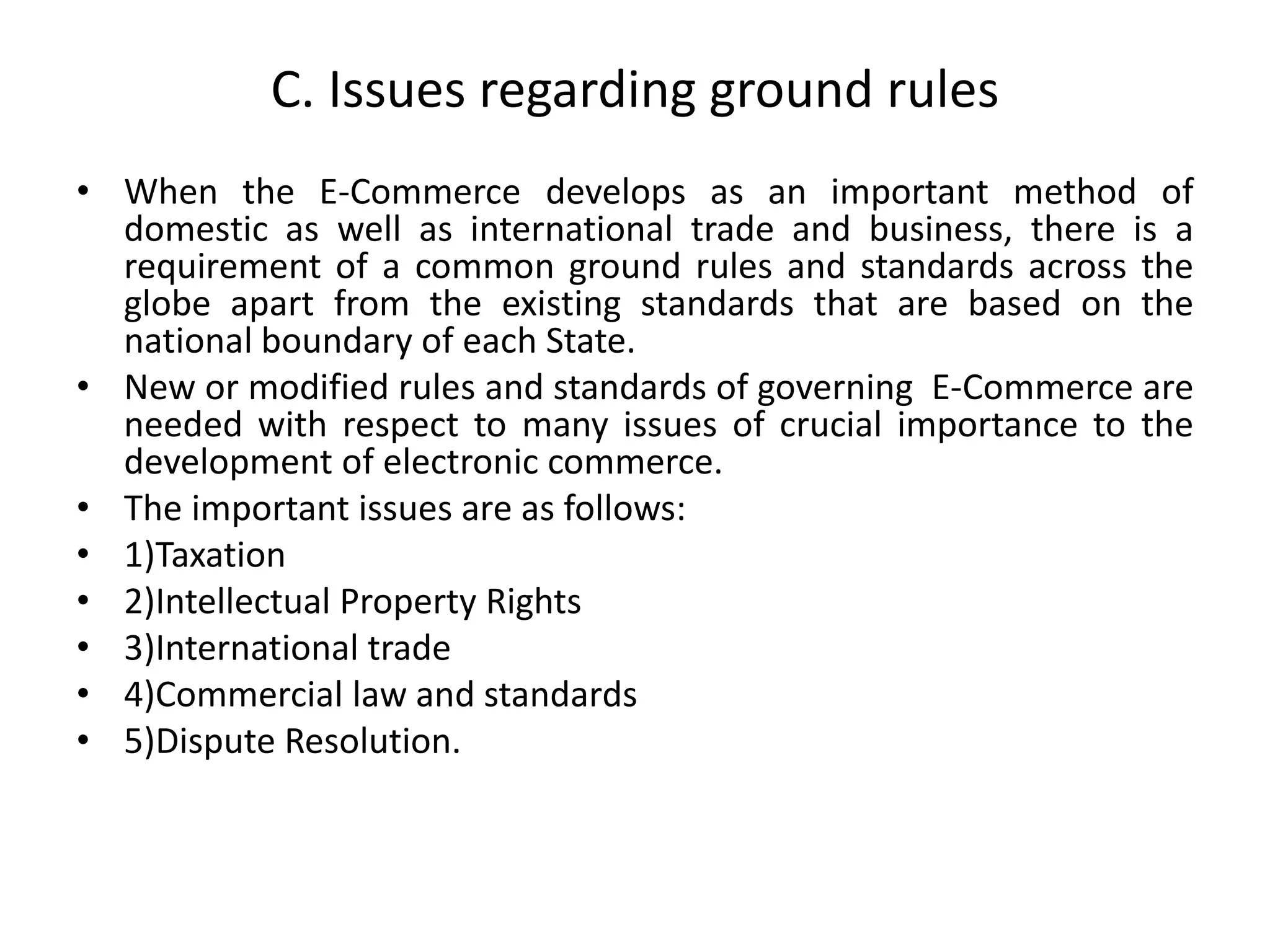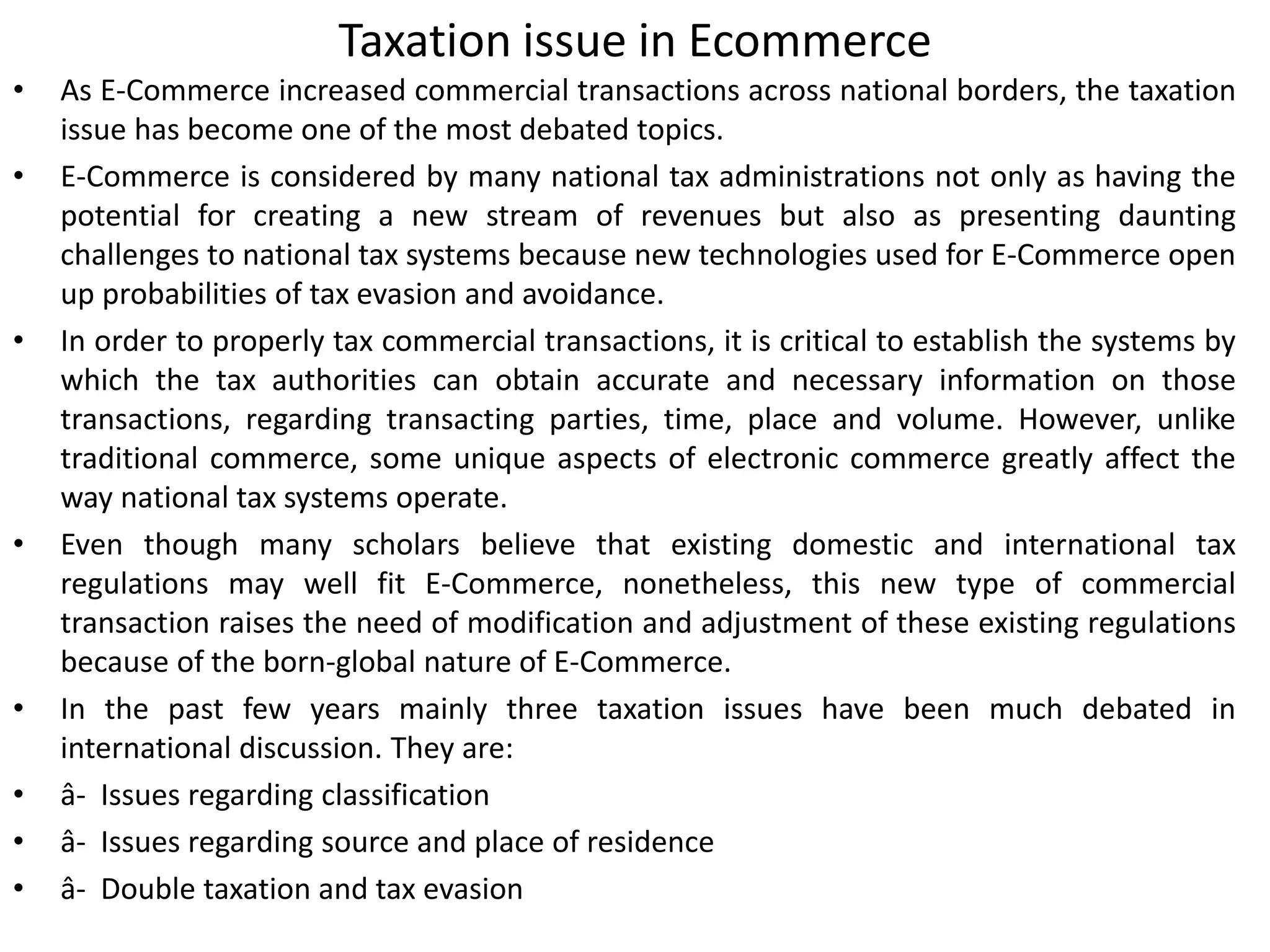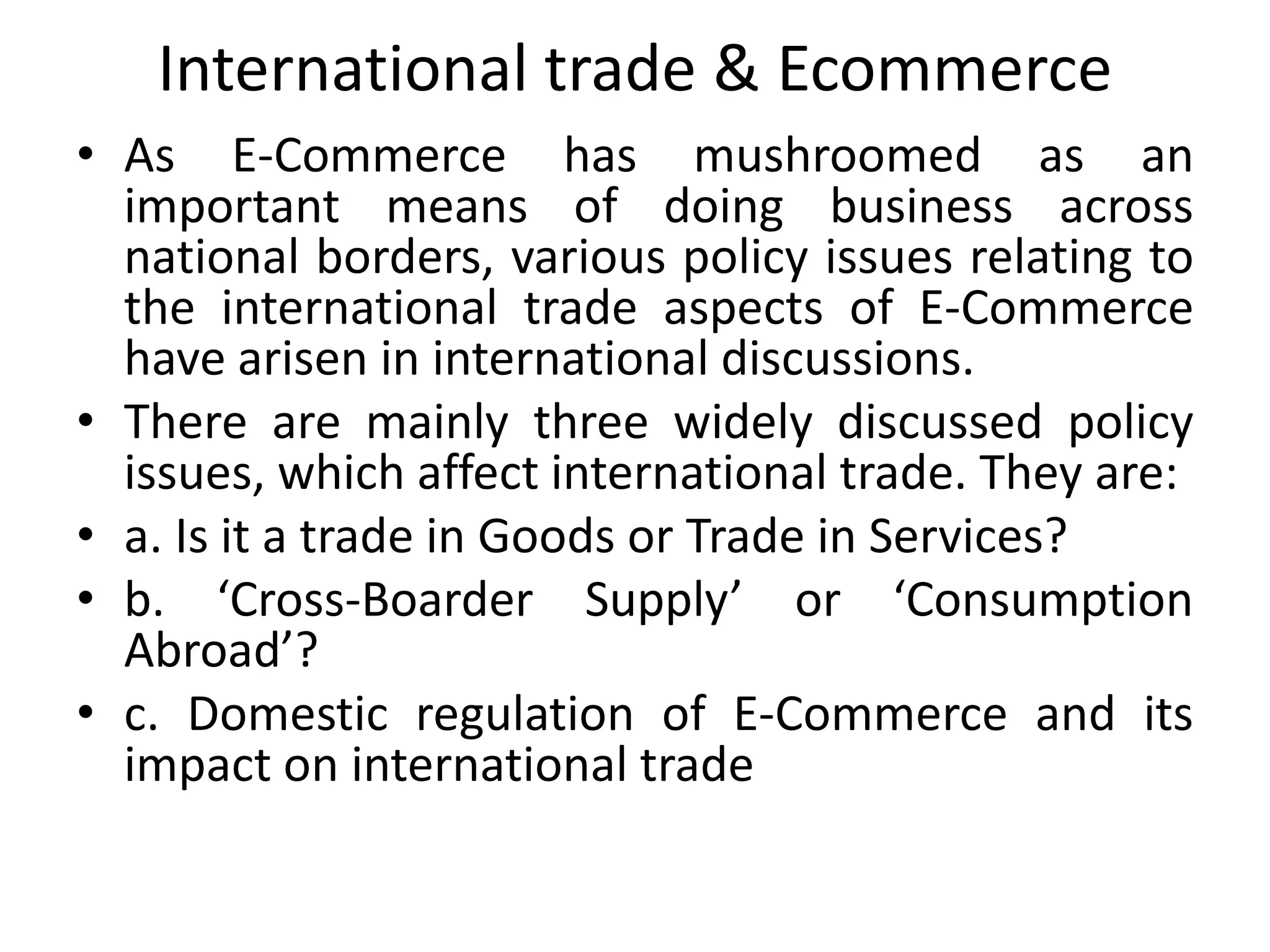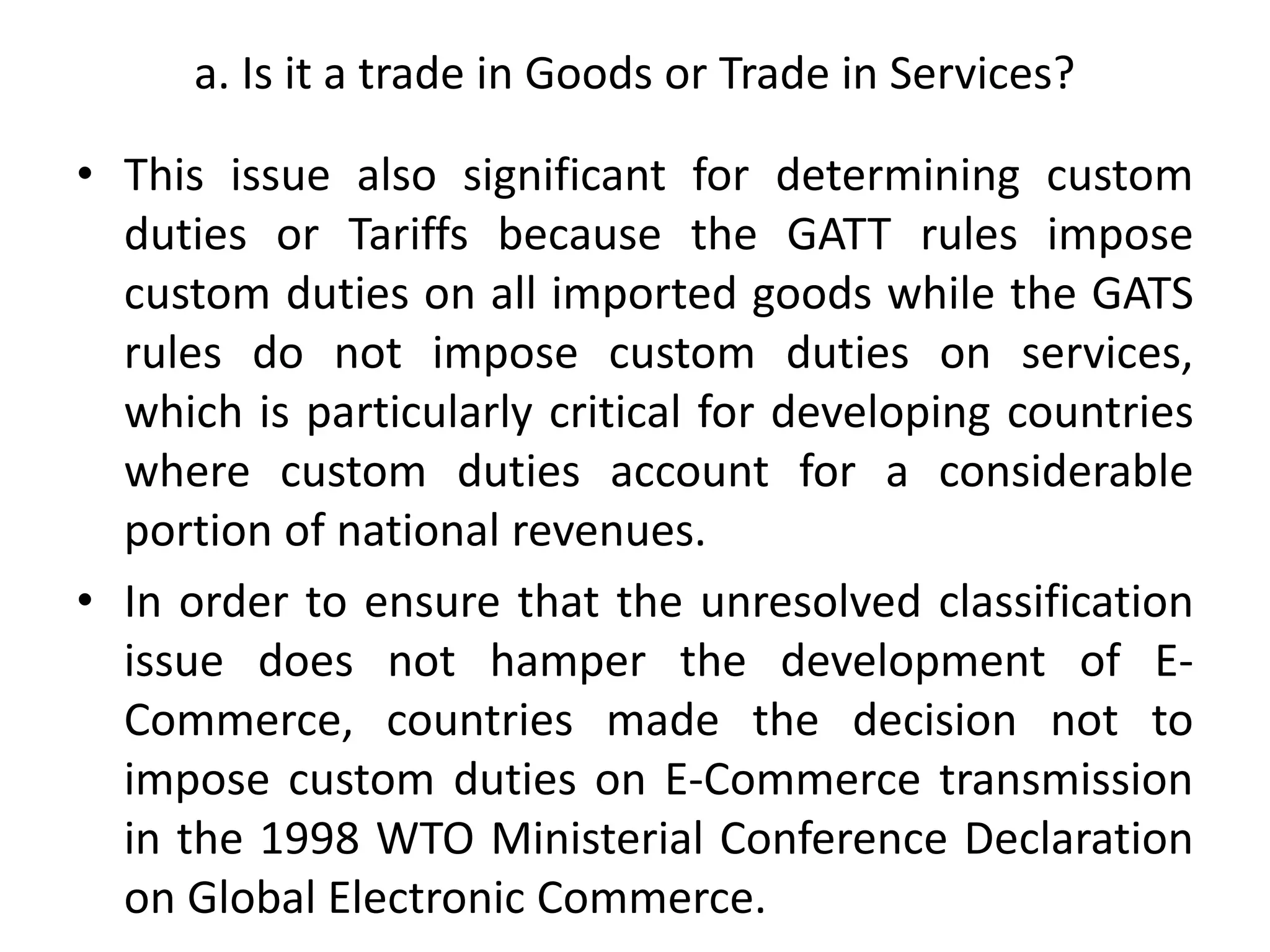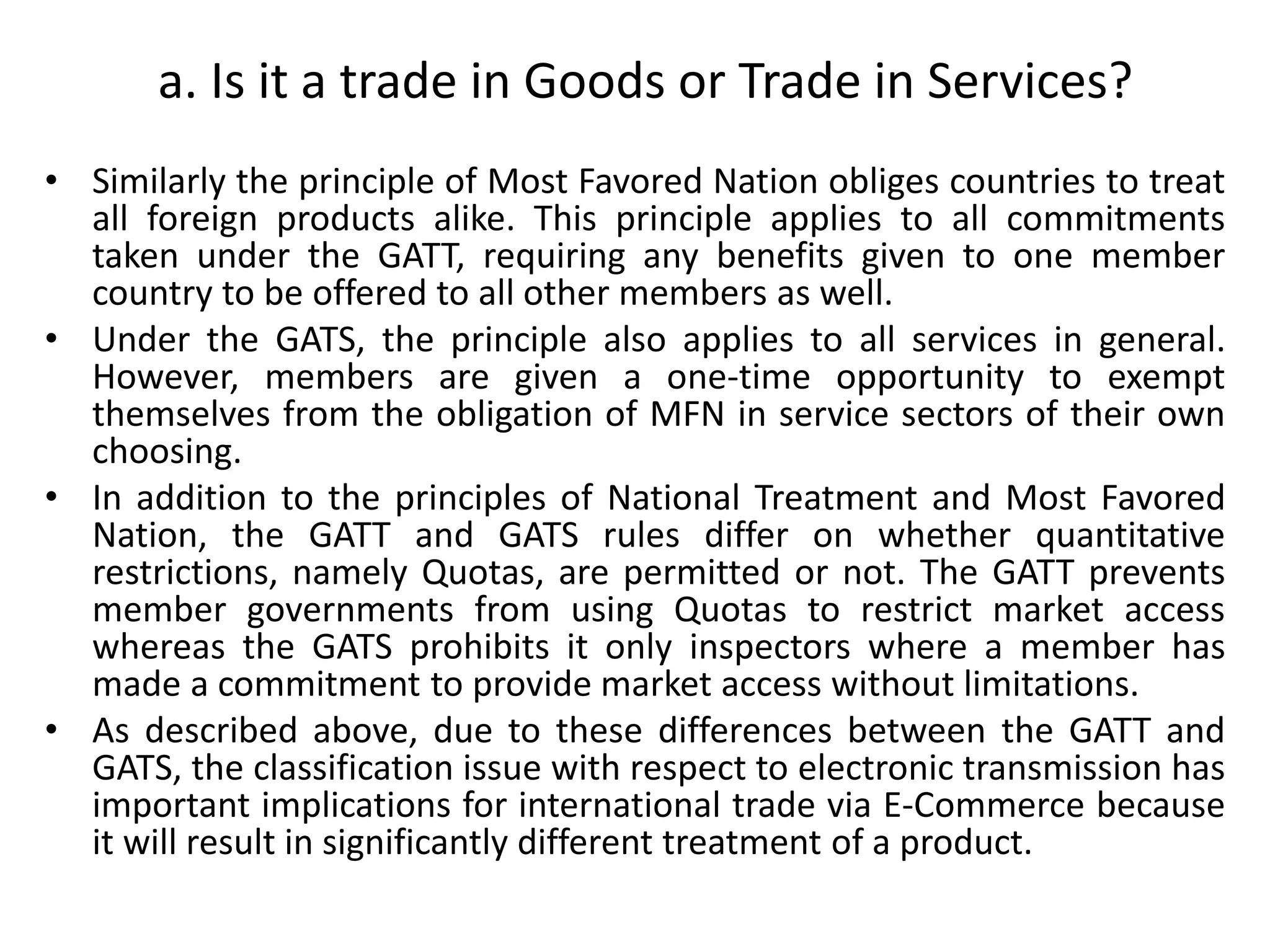This document discusses important issues in global e-commerce. It begins by defining e-commerce and outlining how technological advancements have influenced consumer and business behavior to adopt e-commerce. For businesses, e-commerce allows global operations through websites that can reach customers around the world. However, for e-commerce to be successful there must be trust between parties. The document outlines issues relating to access, trust, and ground rules that impact e-commerce. Specifically, it discusses challenges around infrastructure access, privacy, security, taxation across borders, and regulating online content. Resolving these issues is important for the continued growth and trust in e-commerce globally.
